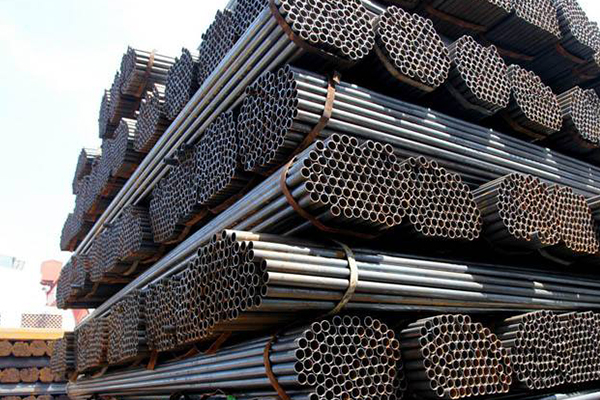Scaffolding is an essential element in any construction project, providing a safe and stable working platform for workers to perform their tasks. Traditionally, scaffolding has been built using bamboo or wooden poles, but with advancements in technology, pipe scaffold has become the preferred choice for many construction companies.

In this article, we will delve into the basics and configuration of pipe scaffolding.
Basics of Pipe Scaffold
Pipe scaffolding is a type of scaffolding system that makes use of steel pipes to create the framework. The pipes are connected together using couplers to form a sturdy structure that can support the weight of construction workers, materials, and equipment. Unlike traditional scaffolding made of wood, pipe scaffolding offers greater flexibility and strength, making it suitable for a variety of construction projects.
One of the primary advantages of using pipe scaffolding is its durability. Steel pipes are strong, sturdy, and able to withstand heavy loads and adverse weather conditions. Additionally, they are resistant to rust and corrosion, ensuring the safety of workers and the stability of the structure over time. This durability also makes pipe scaffolding a cost-effective solution, as it can be reused multiple times.

Configuration of Pipe Scaffold
At Wancheng Tai, we offer a wide range of pipe scaffolding products to suit different construction needs. Our scaffolding systems are designed to be easy to assemble, dismantle, and reconfigure, providing convenience, and efficiency on the construction site. Here are some of the key components and configurations of pipe scaffolding system:
PartⅠ. Vertical Standards
Vertical standards, also known as uprights, are the vertical tubes that make up the main frame of the scaffolding. These are typically made of high-quality steel with a diameter of 1.2 inches, providing strength and stability to the structure. Our vertical standards have holes every 16.4 inches, allowing for easier placement of horizontal and diagonal braces.
PartⅡ. Ledgers
Ledgers are the horizontal tubes that run parallel to the building and connect the vertical standards. They provide lateral support to the scaffolding system, preventing it from swaying. Our ledgers have holes every 19.7 inches, allowing for flexibility in configuration and the installation of diagonals in various directions.
PartⅢ. Braces
Braces, also known as cross braces, are diagonal tubes that connect the vertical standards and ledgers. They provide stability and rigidity to the scaffolding system. Our braces are available in various lengths, making it possible to adjust the width of the scaffolding to meet specific construction requirements.
PartⅣ. Couplers
Couplers are the connectors that hold the different pipes together, creating a robust framework. Our couplers are designed to be strong and durable, holding the entire scaffolding system securely in place. They are also easy to install and remove, allowing for quick and efficient assembly and disassembly of the scaffolding.

PartⅤ. Steel Planks
Steel planks are used to create the working platform for construction workers and are placed on top of the scaffolding structure. Wancheng Tai offer high-quality steel planks with non-slip surfaces to ensure the safety of workers on the scaffolding.
PartⅥ. Base Plates and Adjustable Jacks
Base plates and adjustable jacks are essential components for the stability of the scaffolding system. They are used to level the scaffolding on uneven ground and to distribute the weight of the structure evenly. Our base plates and adjustable jacks are made of strong and durable steel, ensuring the stability and safety of the scaffolding.
Pipe scaffolding is a versatile and robust solution for construction projects of all sizes. At Wancheng Tai, we pride ourselves on providing high-quality pipe scaffolding products that are easy to assemble, disassemble, and reconfigure. Our scaffolding systems offer durability, strength, and flexibility, making them the ideal choice for any construction job.
Tags: Scaffolding Couplers – British Type , Scaffolding Couplers – Germany Type, Scaffolding Pipes
Kind reminder:
Some precautions
♦ Properly inspect the scaffolding before use: Before starting any work on the scaffolding, make sure it is inspected by a competent person and all components are in good condition.
♦ Use a stable and level base: The base of the scaffolding should be set up on a stable and level surface.
♦ Follow load limits: Make sure the scaffolding is not overloaded and only support the planned load. If additional equipment or materials need to be placed on the scaffolding, make sure to check the load capacity beforehand.
♦ Use proper bracing and ties: Scaffolding should be braced and tied to the structure it is attached to at regular intervals to provide stability and prevent any movement.
♦ Use guardrails and toe boards: Guardrails and toe boards should be installed on all open sides of the scaffolding to prevent falls and injuries.
♦ Do not alter or modify: Scaffolding should not be altered or modified in any way. Only use manufacturer-approved components and do not use makeshift solutions.
♦ Use proper access: Ensure that workers have safe and secure access to the scaffolding, such as through a ladder or stair tower.
♦ Provide training: All workers using the scaffolding should be properly trained on how to safely assemble, use, and dismantle the scaffolding.
♦ Regularly inspect and maintain: Regularly inspect the scaffolding for any damage or wear and tear. Any issues should be addressed immediately, and damaged components should be replaced before use.





